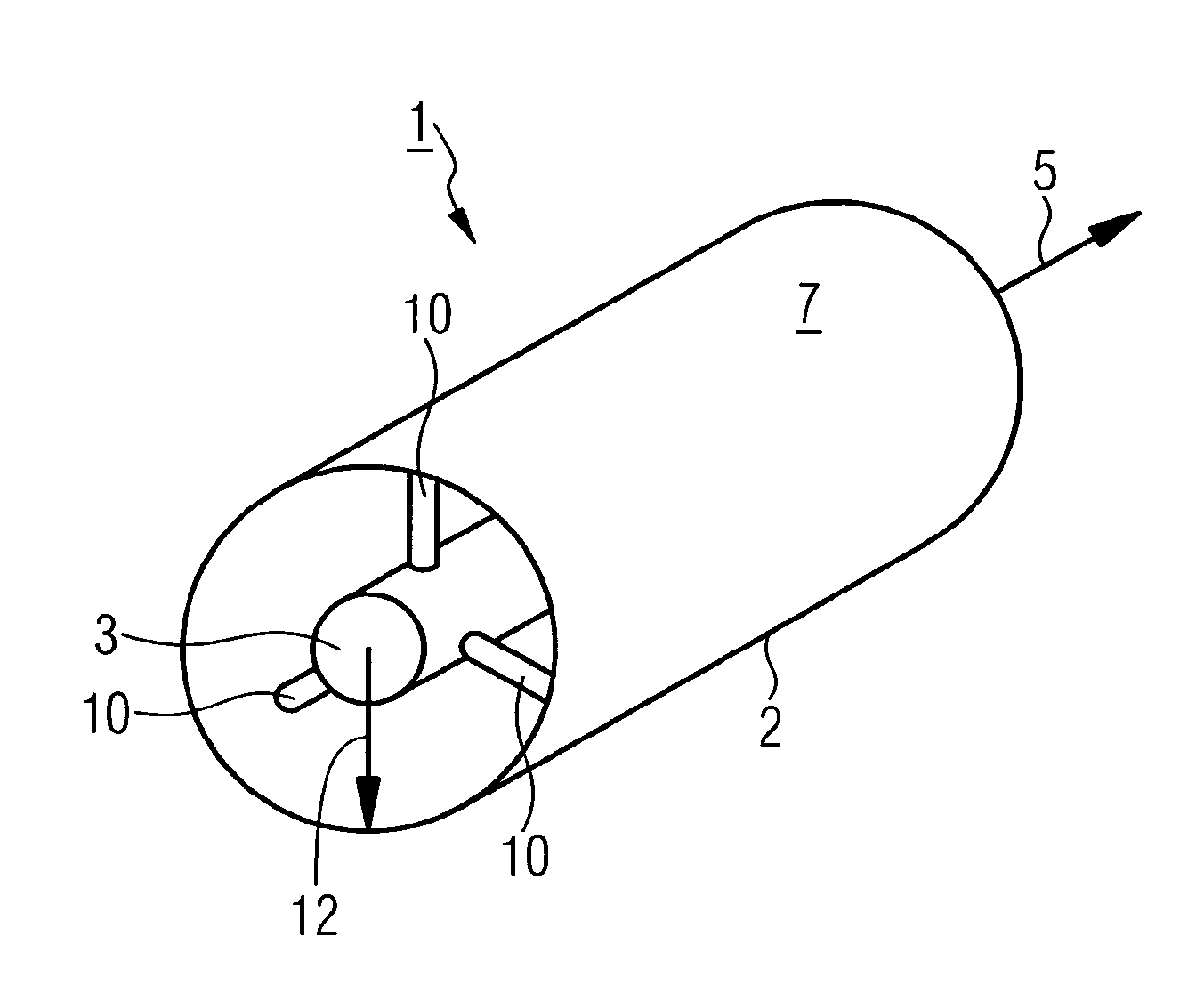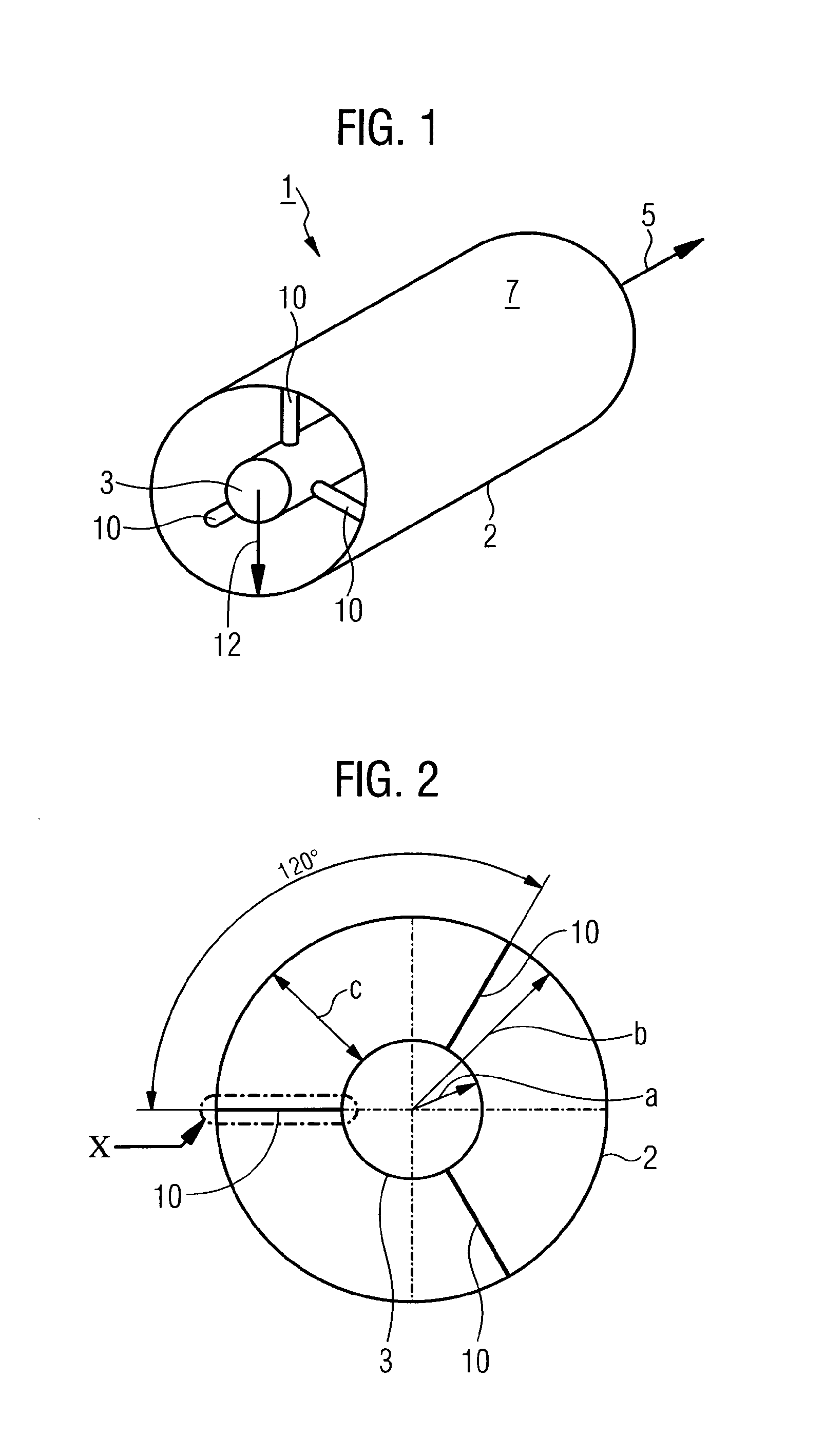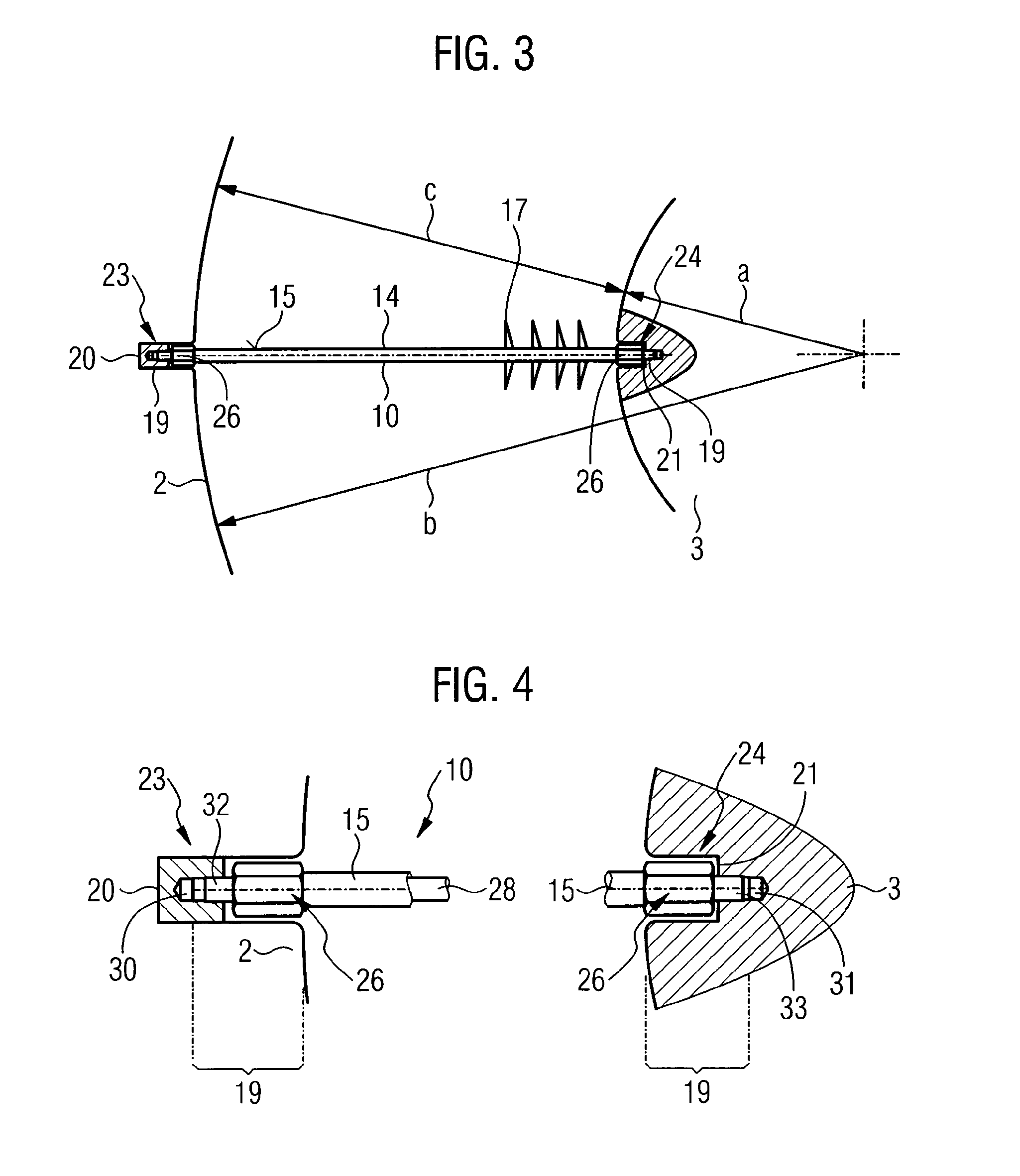Adjustable Support Insulator for a High-Voltage Long-Distance Transmission Line
a long-distance transmission line and adjustable technology, applied in the direction of insulated conductors, flat/ribbon cables, cables, etc., can solve the problems of enlarged dimensions of long-distance transmission lines, achieve simple adjustment capability, reduce production costs, and simplify the process of laying the inner conductor
- Summary
- Abstract
- Description
- Claims
- Application Information
AI Technical Summary
Benefits of technology
Problems solved by technology
Method used
Image
Examples
Embodiment Construction
[0038]FIG. 1 schematically illustrates a section of a long-distance transmission line 1 in which a cylindrical, solid inner conductor 3 is laid in the interior of a hollow-cylindrical casing tube 2. In this case, the inner conductor 3 is laid coaxially with respect to the casing tube 2. Alternatively, the inner conductor is in the form of a tubular conductor. The long-distance transmission line 1 extends overall along a longitudinal direction 5. The figure in this case shows a single subpiece 7, with a multiplicity of subpieces 7 being placed adjacent to one another, overall, in the longitudinal direction 5, for example by screw connection or welding, to form the long-distance transmission line 1.
[0039]Both the casing tube 2 and the inner conductor 3 are manufactured from aluminum or some other electrically highly conductive light metal alloy. At regular intervals along the longitudinal direction 5, the inner conductor 3 is held by means of in each case three holding insulators 10 i...
PUM
| Property | Measurement | Unit |
|---|---|---|
| diameter | aaaaa | aaaaa |
| DC voltage | aaaaa | aaaaa |
| thickness | aaaaa | aaaaa |
Abstract
Description
Claims
Application Information
 Login to View More
Login to View More - R&D
- Intellectual Property
- Life Sciences
- Materials
- Tech Scout
- Unparalleled Data Quality
- Higher Quality Content
- 60% Fewer Hallucinations
Browse by: Latest US Patents, China's latest patents, Technical Efficacy Thesaurus, Application Domain, Technology Topic, Popular Technical Reports.
© 2025 PatSnap. All rights reserved.Legal|Privacy policy|Modern Slavery Act Transparency Statement|Sitemap|About US| Contact US: help@patsnap.com



